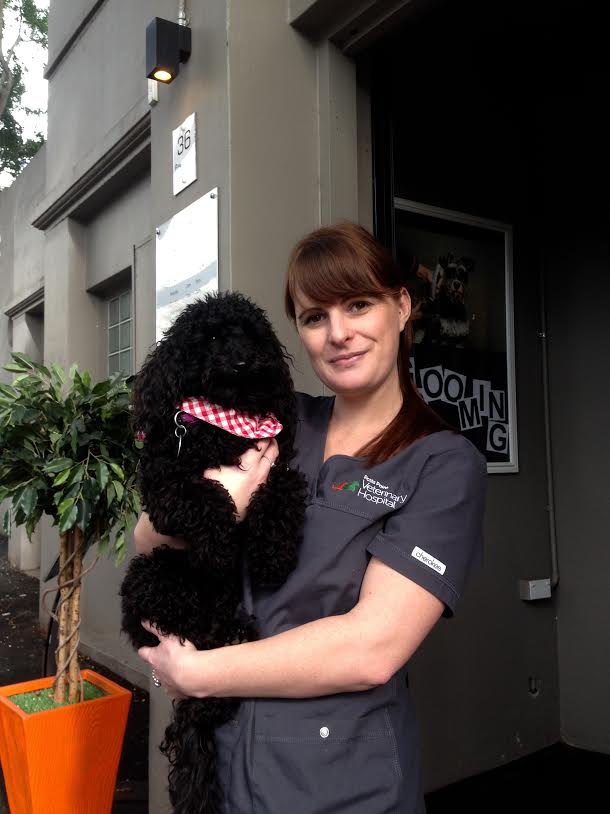Our pets rely on us for everything - food, exercise, a caring loving home and vet care. Sometimes we leave vet care for one or two days due to a busy lifestyle or maybe because your little one ‘just isn’t that sick.’ When should vet care not be delayed? There are many conditions and injuries that should be seen immediately, read on to find out what they are.

1. Any time your pet is in respiratory distress.
Labored breathing, abnormally fast or slow breathing or just “breathing funny” are all cause for concern.
An animal can go into respiratory distress for a multitude of reasons, and any deviation from normal should be checked.
2. Severe bleeding.
Any excessive haemorrhage from a wound or body orifice should be attended to as soon as possible.
3. Rapid and progressive abdominal distension.
This can be a sign of potentially fatal bloat in dogs. Breeds most susceptible to bloat are deep chested dogs such as boxers, great Danes, German shepherds and standard poodles. Bloat can be caused by other factors and should be treated immediately. A distended abdomen is also a sign of other medical emergencies and veterinary treatment should always be sought.
4. Collapse or unconsciousness.
Any animal suffering form acute collapse or unconsciousness should be transported carefully and safely to the nearest vet hospital. Causes are wide and varied.
5. Inability to urinate.
This is particularly important for male cats. Straining to urinate with no or little urine produced in a male cat can be a sign of an urethral obstruction. Left untreated, this can lead to kidney failure, ruptured bladder and death. Early treatment of this condition provides the best possible outcome.
6. Protracted vomiting.
Pets experiencing extended periods of vomiting or coupled with severe depression could have a gastrointestinal obstruction among other health problems and should be checked as soon as possible.
7. Severe diarrhoea.
This can be particularly problematic for younger patients who can become dehydrated and depressed very quickly with the loss of fluids that diarrhoea causes.
8. Sudden onset of severe neurological abnormalities.
There is a wide range of neurological abnormalities that your pet can exhibit from change in behaviour, ataxia and eye changes. If you are unsure if your pet is displaying a neurological change that should be tended to straight away, call your local vet for advice.
9. Ingestion of a toxin.
There are a wide range of household products, plants and foods that are toxic to dogs and cats (keep a look out for our future blogs on toxins to dogs and cats.) If you are unsure whether the thing your pet has eaten is toxic or not, call your local vet. Treatment is best started within 2-4 hours of ingestion.
10. Severe weakness or inability to stand.
Dogs displaying these symptoms should be transported very carefully to the nearest vet.
11. Snakebites and ticks.
Not all snakes in Australia are poisonous (and snake bites in the city area are rare) but they can be potentially fatal. If your pet is bitten, take note of the type of snake that bit your pet and take them to the vet immediately. Similarly, if your pet is found with a paralysis tick, take it to your nearest vet for removal and treatment.
Click here to read our post on paralysis ticks and your pets.
12. Extreme pain.
If your pet seems to be displaying signs of pain - change in behavior, limping, favouring one area of the body etc, please seek veterinary advice. Do not give human pain medications.
13. Fractures with bones visible.
These are extremely painful and can become infected very quickly.
14. Dystocia (difficulty giving birth)
Problems during the birthing process can occur. If a female dog is displaying any of these signs she should be taken to vet immediately.
- Green/black vulvar discharge is seen and 2 hours has elapsed without producing a puppy
- The bitch appears unwell or depressed
- A puppy can be seen stuck in the birth canal
- She has been straining for more than 30 minutes without production of subsequent puppies or
- She rests for more than 2 hours between puppies without straining.
Remember the main thing to try and do in an emergency is to remain calm. This is extremely difficult when your fur baby is hurt or in pain but the more calm you are the calmer your pet will be.
Please be careful when transporting painful animals, although they love you, they may bite if in extreme pain.
If you are ever unsure if your animal needs to be seen, please contact us for qualified and helpful advice.

